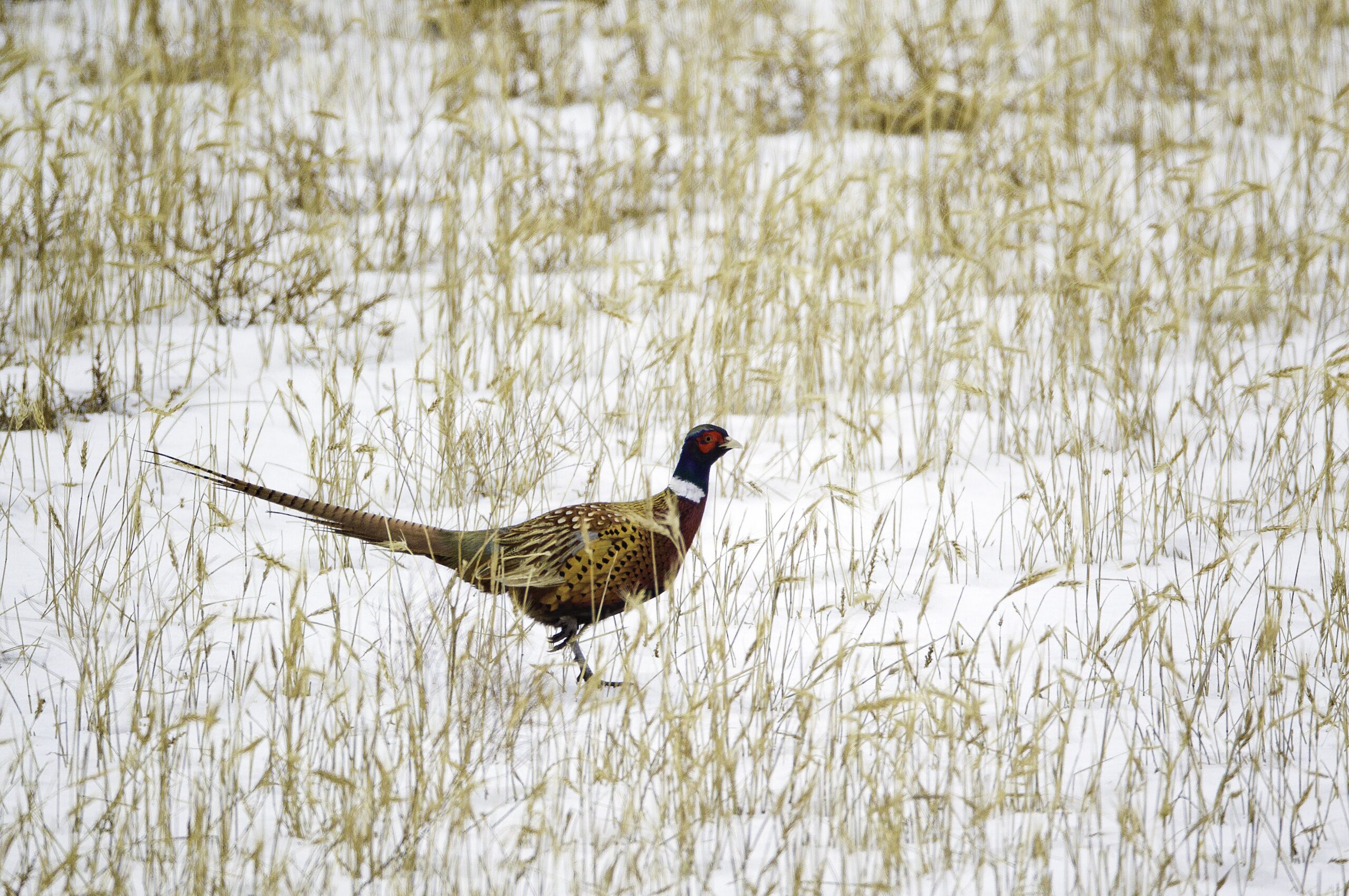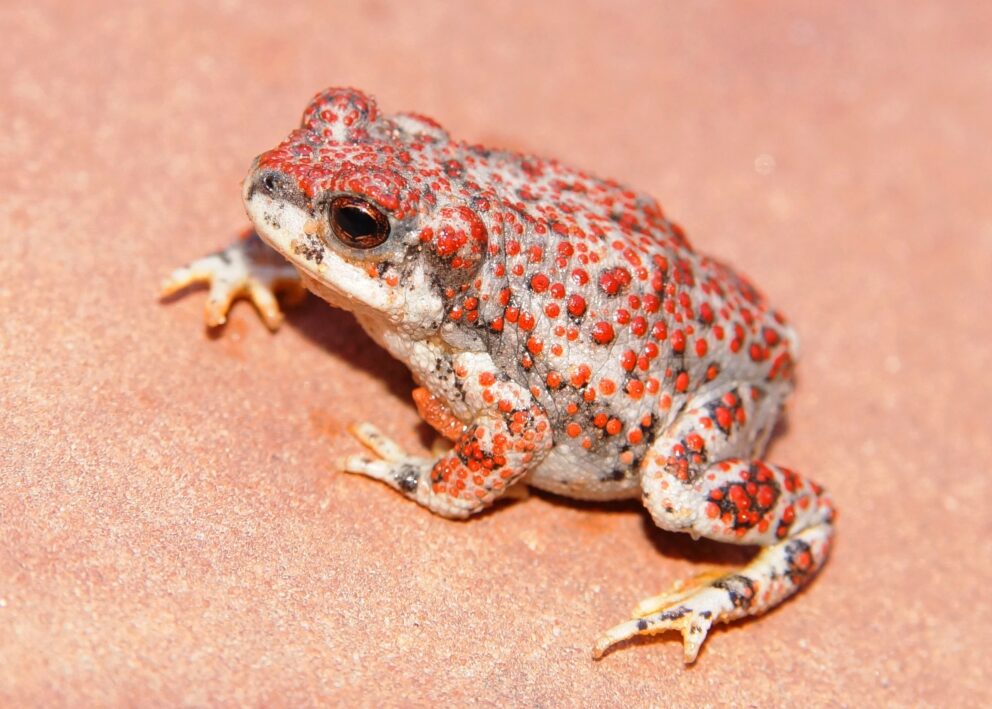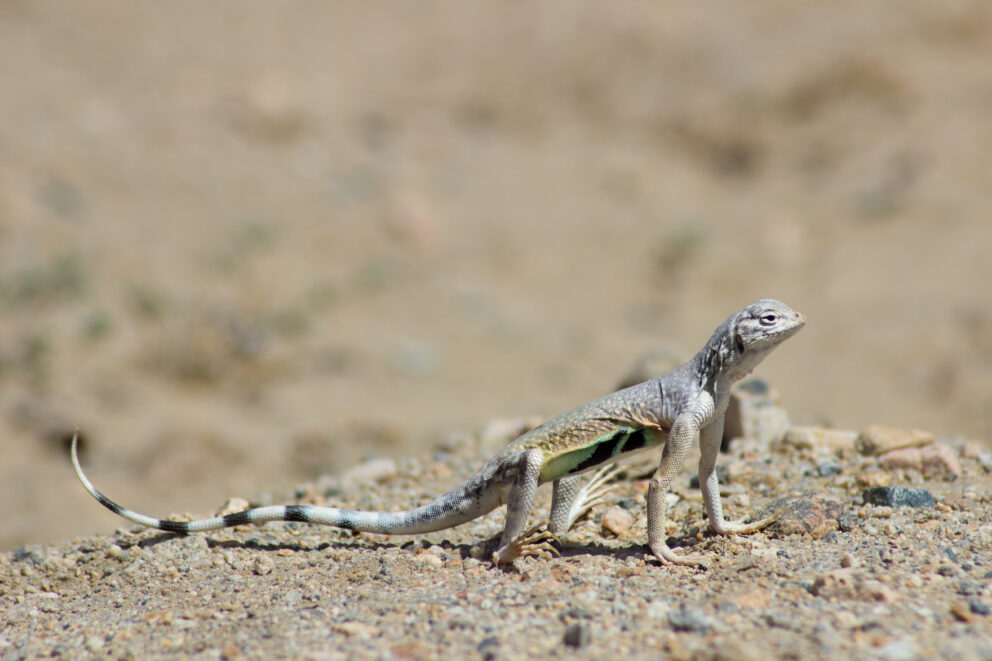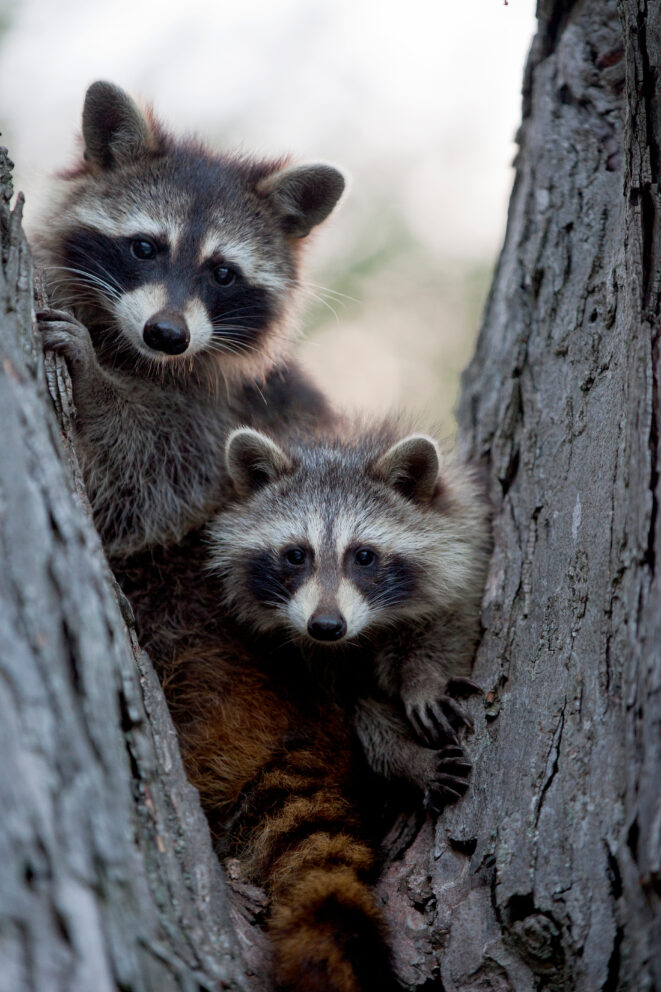- SCIENTIFIC NAME
- Phasianus colchicus
- CLASSIFICATION
- Bird
- LIFE SPAN
- 1-5 Years
- SIZE
- 20-35” | 2-2.6lbs
- STATE CONSERVATION STATUS
-
- State Protected
- FEDERAL CONSERVATION STATUS
- Least Concern
- GAME STATUS
- Game
- GAME TYPE
- Upland Game
- Washoe
- Humboldt
- Pershing
- Churchill
- Mineral
- Lyon
- Douglas
- Carson City
- Storey
- Elko
- Lander
- Eureka
- White Pine
- Esmeralda
- Nye
- Lincoln
- Clark
- Grasslands
- Marsh
- Upland Forests
Threats
- Disease
Natural History
Ring-necked Pheasants are ground foragers, eatings mostly wild fruits, nuts, and insects. They will use their beaks and feet to turn over soil and pick insects out of the ground. During the early spring, breeding territories are established by male pheasants. Competitors in these territories will fight by fluttering upwards, biting, and scratching each others wattles. Females will gather around one male in his territory, where the male will guard them from advances of other males. Females will create a very basic nest on the ground surrounded by tall vegetation. Chicks are born ready to leave the nest almost immediately.
Fun Facts
Ring-necked Pheasants often harass other ground nesting birds, and females will sometimes lay their own eggs in the nests of these birds. The young will grow up as brood parasites often among Prairie Chickens.














